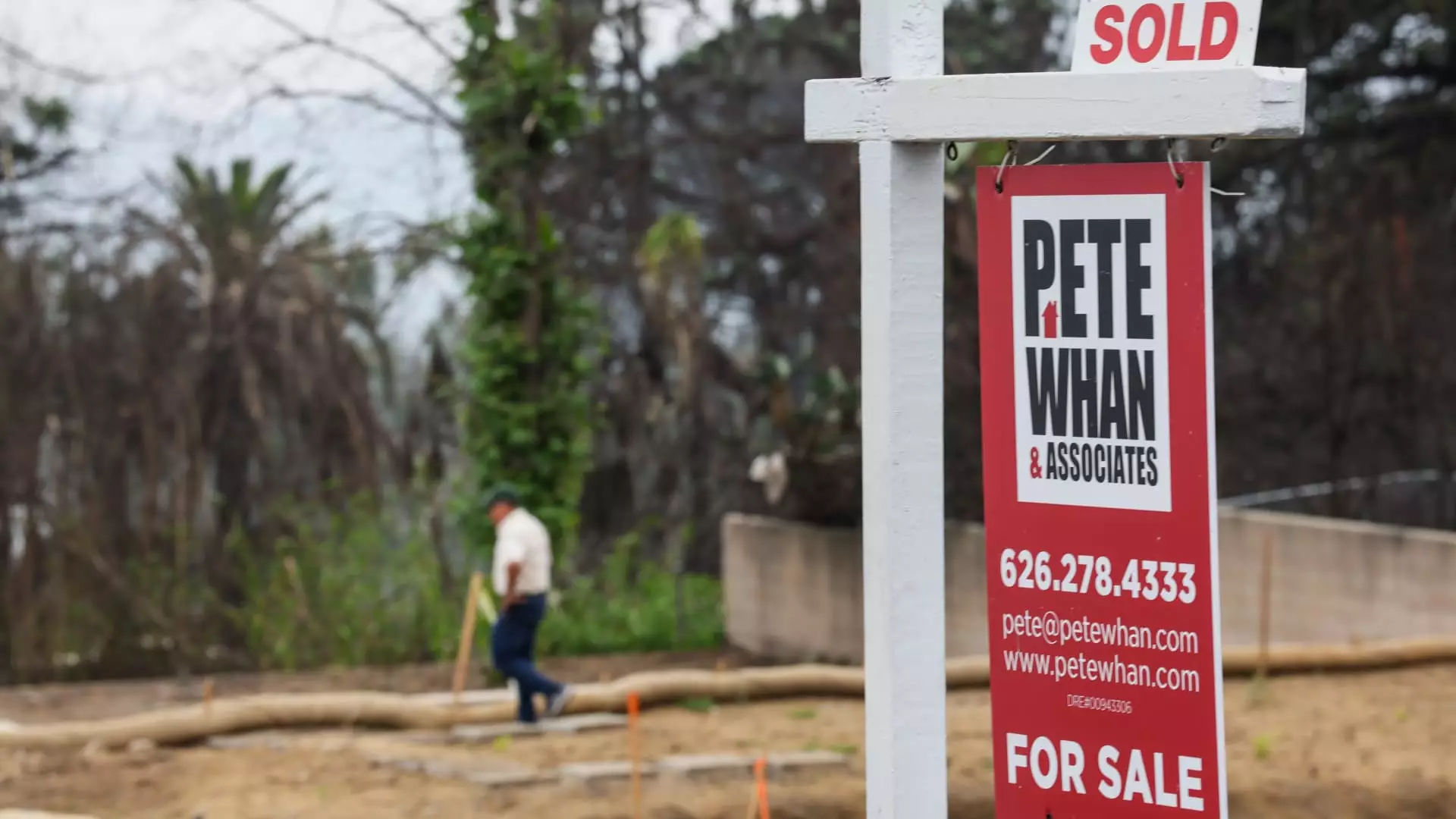In recent weeks, the financial landscape has become undeniably volatile, casting a long shadow over the American housing market. Treasury yields, often seen as a barometer of economic confidence, have surged amidst renewed apprehensions about tariffs and their potential disruptive effects. This uptick has driven mortgage rates upward, hampering an already fragile industry and raising profound concerns about the future accessibility of homeownership for average Americans. The patience of potential homebuyers is wearing thin as a 10% decline in mortgage applications illustrates, revealing a market increasingly gripped by hesitation and fear rather than optimism.
What’s troubling is the subtle but persistent shift in housing dynamics. Despite a gradual increase in inventory since the start of the year, buyers are retreating even as prices soften. The cooling demand signifies an erosion of the confidence that once fueled the housing boom, now hindered by rising borrowing costs. Sellers, sensing the changing tides, are becoming more cautious, further dampening the vitality of an essential sector that otherwise acts as an economic backbone. This decline isn’t just a numbers game—it’s a stark indicator of how macroeconomic factors like inflation, tariff policies, and bond yields translate into real-world consequences for everyday citizens seeking security through homeownership.
Rate Hikes and Their Disproportionate Burden on Middle-Class Americans
The fact that mortgage rates for 30-year fixed loans increased to 6.82% underscores the growing difficulty faced by middle-income households. As borrowing costs climb, many prospective buyers find themselves priced out of the market or forced to delay their plans. This creates an environment where inequality deepens, as wealthier individuals or speculators with access to jumbo loans continue to benefit from comparatively lower rates. Meanwhile, average borrowers are growing increasingly disillusioned, feeling increasingly marginalized in a housing ecosystem that seems to favor the well-off lately.
Refinancing applications, vital for homeowners trying to reduce costs and improve financial stability, have plummeted by 7%. With rates trending higher, it’s evident that the broader economic uncertainty is discouraging not just new buyers but also those looking to optimize their existing assets. This downturn highlights a troubling trend: stability in homeownership, traditionally viewed as a cornerstone of American prosperity, is slipping away from those who need it the most. The continued influence of tariffs and inflation data reveals policymakers’ decisions are more impactful than ever—yet, they often seem disconnected from the lived realities of the average person.
A Critical Crossroads: Policy Decisions Will Define America’s Housing Future
The recent spike in mortgage rates, despite only slight deviations from inflation figures, exposes a deeper vulnerability in economic policymaking. The decision to impose tariffs—aimed ostensibly at protecting domestic industries—may inadvertently trigger a cascade of financial repercussions that undermine the very foundations of the housing market. These policies, if not carefully calibrated, risk fueling a cycle of decline that could turn the American Dream into an increasingly distant aspiration for many.
Instead of panicking or resorting to reactive measures rooted in short-term gains, policymakers must prioritize stability and inclusivity. It’s time to reimagine economic strategies that do not disproportionately burden middle-class families while safeguarding the health of the housing sector. In doing so, the nation can navigate this turbulent period with a balanced approach that recognizes housing as more than just an investment—it’s a fundamental human need that requires careful safeguarding in times of economic upheaval.

